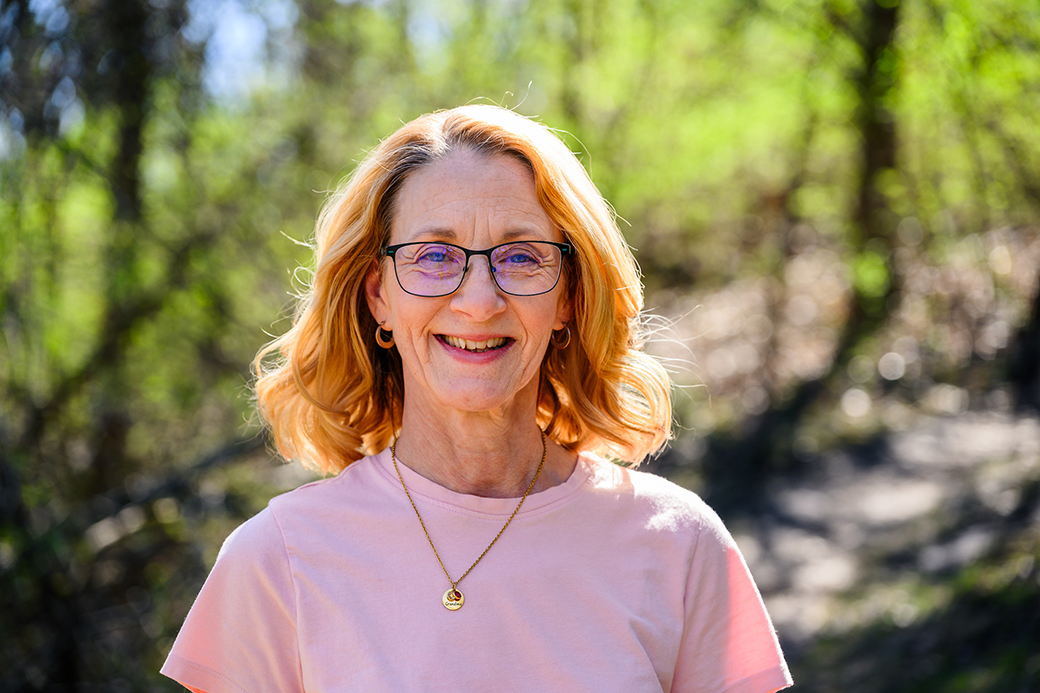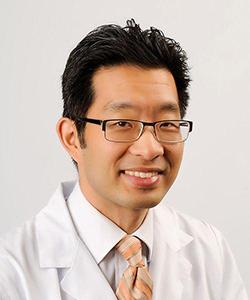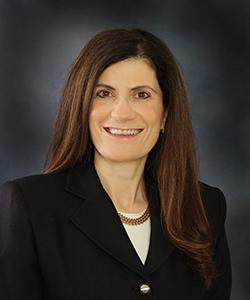During her commute home, Janet Luebbering would often find herself at a crossroads.
Exhausted from chronic fatigue but determined to care for her mother, the intersection of Edgewood Drive and Missouri Route 179 in Jefferson City would present Janet with a difficult choice. Turn right to see her mom. Turn left to collapse at home in Wardsville.
“I was so exhausted that when I pulled up to the intersection, I had to make that decision,” she said. “It was hard, and I couldn’t go see her every night. I would get home, and as soon as I got in the door, I’d fall asleep on the couch.”
Janet was diagnosed with obstructive sleep apnea (OSA) in 2021 after years of interruption to her life.
Obstructive sleep apnea is a common condition caused by the airway narrowing or collapsing entirely during sleep. This causes stress and makes the body work harder when it should be resting. In addition to daytime sleepiness and poor sleep, it can cause an increased risk of high blood pressure, heart rhythm disorders, insulin resistance and other health problems.
“I was just so tired, if I sat down, I’d fall asleep,” Janet said. “I thought I was sleeping, but I was not getting a good night's sleep.”
Driving itself was difficult. Fatigue impaired Janet's judgment, and she remembers at least two close calls when she pulled out in front of someone. Driving 30 minutes from Jefferson City to Columbia was out of the question.
If she went grocery shopping, she’d have to take a quick nap in her car to make it into the store, or home safely after.
Janet started using a continuous positive airway pressure (CPAP) machine with limited success. It made camping trips with her husband more difficult, and though Janet would feel better in the morning if the mask had stayed on, usually it would slip off her face. Sometimes Janet would give up entirely and toss the mask across the room.
“I was in a constant battle with my CPAP mask,” Janet said.
Frustrated that initial treatment hadn’t resulted in better sleep, she talked with her doctor, who referred her to David Chang, MD, a surgical ear, nose and throat specialist at MU Health Care. Janet’s husband drove her to Columbia for that appointment in 2023.
“Janet was really symptomatic, which was not something you might expect from her appearance, as she had a thin frame,” Chang said.
OSA is a common secondary condition in people who are diagnosed with overweight or obesity. But anatomic issues separate from weight gain can contribute to OSA, too.
“That in-person visit was really important to help me understand what she was going through,” Chang said. “Her CPAP machine was not helping her. Those facts were important steps to find a treatment that would work for her.”
Chang recommended a hypoglossal nerve stimulation (HNS) implant — manufactured by Inspire Medical Systems — to provide upper airway relief. During an outpatient surgical procedure that uses two small incisions, a surgeon implants a matchbox-sized device under the skin as well as a wire connected to the hypoglossal nerve, which innervates the tongue.
When turned on at night, the device senses a breath and then provides an electrical signal to the nerve, which moves the tongue forward and opens the airway. This can help prevent or reduce the tongue’s impact on the airway in people diagnosed with OSA, improving restorative sleep.
“Dr. Chang was great at answering all my questions and his staff handled the insurance,” Janet said. “They knew what they were talking about, and they connected me with Dr. Nabhane. Everyone was great and I never felt unsure about anything.”
Gracia Nabhane, MD, is a pulmonologist and a sleep specialist at Capital Region Medical Center, MU Health Care’s hospital in Jefferson City. There, she helps patients like Janet program and monitor their Inspire devices and provides care for a range of sleep issues.
“Janet is someone who loves life and who wants to be independent, but wasn’t confident driving more than 15-20 minutes,” Nabhane said. “Within weeks of her HNS activation, she felt better and was so excited the first time she was able to drive by herself out of town.”
Janet still remembers the day of the surgery: December 15, 2023. Six weeks later, after her body had healed and adapted to the Inspire, Janet used the small handheld remote to turn her device on for the first time.
As she and Dr. Nabhane worked together to find the right stimulation level, the difference in her sleep quality and energy levels was night and day. Soon, she was confident enough to drive outside of Jefferson City by herself.
“I used to sleep in my car all the time, but I don’t need to anymore,” Janet said. “I was pleasantly shocked and elated that I could drive for 30 minutes without feeling drowsy. I was scared to drive, and that’s totally changed.”
In addition to better, more restful sleep and all the benefits that follow, finding an answer to Janet’s sleep apnea can reduce the cumulative effects from a lack of oxygen that contribute to health issues later in life.
She and her husband can go back to staying at nonelectric campsites. Janet has more energy for hikes and drives to take in the scenery of their most recent vacation in Colorado and Wyoming.
“My days now are so different than my days before,” Janet said. “I don’t know how I ever survived. Everything’s much better now.”





